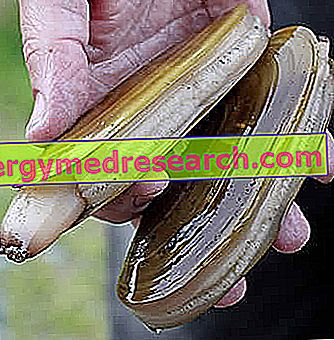Kamut and Pasta
What is kamut?
Kamut is the name of the registered American brand (®) of the Khorasan wheat or oriental wheat, botanically called Triticum turgidum ssp. Turanicum (class. Jakubz). Kamut is a very ancient tetraploid grain; the name Khorasan derives from the historical region in which it is supposed to have been born, included between the current Iran and Afghanistan. Unlike the most common wheats, kamut has about twice the largest size of seeds; for the rest, it has the same identical applications (flour, pasta, bread, breakfast cereals, biscuits, waffles, pancakes, bulgur, drinks, beer and snacks).
What is kamut pasta?
Kamut pasta is an integral product that belongs to the III fundamental group of foods.

Much used in last generation healthy nutritional regimens, it is not so different compared to traditional pasta. It lends itself to the same culinary applications and shows an almost identical chemical profile. It has an average price higher than the common wheat pasta.
Nutritional Properties
Nutritional characteristics of kamut pasta
Kamut pasta is a product that belongs to the nutritional group of cereals, tubers and derivatives (III fundamental group of foods). Please note that it is an integral food, which is why it should not be compared with white wheat pasta, but with dark one.
Like the other types, even raw dry Kamut pasta is a very caloric food. Cotta supplies about half of the energy, thanks to greater hydration (around 55% instead of 11%). Calories are mainly supplied by carbohydrates (over 70% of dry weight), followed by proteins (almost 15%) and finally by lipids (just over 2%). Carbohydrates are fundamentally complex, peptides of medium biological value and unsaturated fatty acids. The fibers are quite abundant (over 9%). Cholesterol is absent. There is a high concentration of gluten, while lactose and histamine are not present. Also kamut proteins, like those of normal wheat, in predisposed subjects can give rise to the allergic reaction. Vitamins include levels of thiamine (B1), niacin (PP), pantothenic acid (B5) and pyridoxine (B6). With regard to mineral salts, the concentrations of manganese, phosphorus, zinc, magnesium and iron stand out (the latter being slightly bioavailable).
Kamut pasta is a food that lends itself to most nutritional regimes. It has a significant energy glycemic load, which requires moderate portions in case of overweight, type 2 diabetes mellitus and hypertriglyceridemia. The considerable amount of fiber can be responsible for an increase in intestinal peristalsis. It is logically to be avoided in the diet of celiac and allergic to wheat proteins, while it has no contraindications for nutritional regimens of lactose and histamine intolerance. It is widely used in the vegan diet in association with legumes, to bridge the biological value of proteins and thus reach the same amino acid pool as an omnivorous diet. It has no contraindications in religious nutritional schemes, such as the kosher, Muslim, Hindu or Buddhist one.
Some argue that ground kamut retains its nutritional characteristics more, but these are conjectures without any scientific basis.
The average portion of kamut paste is about 80 g of dry raw food (about 270 kcal).

Dry, raw Kamut | ||||
Nutritional values per 100 g | Quantity' | % * | ||
| Power | 337.0 kcal | |||
Total carbohydrates | 70.38 g | |||
Starch | 52.41 g | |||
| Simple sugars | - g | |||
| fibers | 9.1 g | |||
| Grassi | 2.2 g | |||
| Saturated | 0.192 g | |||
| Monounsaturated | 0.214 g | |||
| polyunsaturated | 0.616 g | |||
| Protein | 1.44 g | |||
| water | 10.95 g | |||
| Vitamins | ||||
| Vitamin A equivalent | -μg | |||
| Beta-Carotene | -μg | |||
| Lutein Zexanthin | -μg | |||
| Vitamin A | -iu | |||
| Thiamine or vit B1 | 0.591 mg | 51% | ||
| Riboflavin or vit B2 | 0.178 mg | 15% | ||
| Niacin or vit PP or vit B3 | 6.35 mg | 42% | ||
| Pantothenic acid or vit B5 | 0.9 mg | 18% | ||
| Pyridoxine or vit B6 | 0.255 mg | 20% | ||
| folate | -μg | 2% | ||
| Choline | - mg | |||
| Ascorbic acid or vit C | - mg | 44% | ||
| Vitamin D | -μg | |||
Alpha-tocopherol or E | 0.6 mg | 6% | ||
| Vitamin K | -μg | |||
| Minerals | ||||
| Football | - mg | |||
| Iron | 4.41 mg | 34% | ||
Magnesium | 134.0 mg | 38% | ||
| Manganese | 2.86 mg | 136% | ||
| Phosphorus | 386.0 mg | 55% | ||
| Potassium | 446.0 mg | 9% | ||
| Sodium | - mg | |||
| Zinc | 3.68 mg | 39% | ||
| fluoride | -μg | |||
Kitchen
Kamut pasta in the kitchen
Kamut pasta is an ingredient designed for the preparation of first courses. Sauteed in broth or au gratin, they are the same as in traditional cooking. It must be admitted that the final result is not entirely identical; in fact, lovers of Italian gastronomy do not willingly accept the differences in consistency, taste and aroma between durum wheat and kamut pasta.
Perhaps also for this reason, kamut pasta is mainly used for packaging dietetic recipes, light and rich in fiber, very often vegetarian or vegan. It is classic to combine kamut pasta with legumes (fresh broad beans, chickpeas, etc.), vegetables (tomatoes, peppers, asparagus, etc.), or even with algae. Many use kamut pasta to combine with other "fashionable" foods, including cereals (such as teff), pseudocereals (quinoa, amaranth, buckwheat) and legumes (azuki beans, etc.), spices (turmeric, curry, etc.), vegetables and fruits from overseas.



